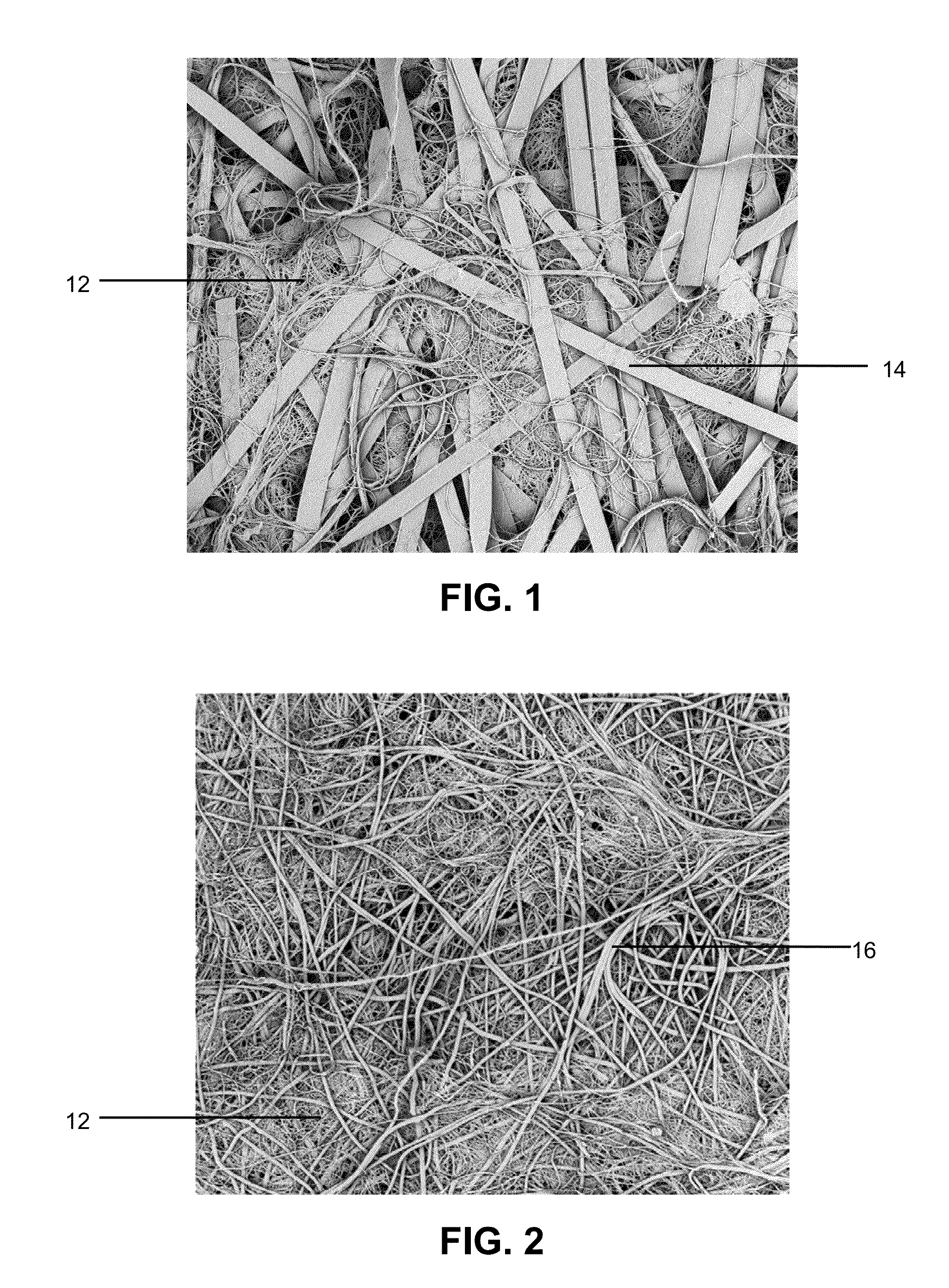Sterilizable and printable nonwoven packaging materials
a non-woven, printing technology, applied in the direction of textiles, papermaking, disinfection, etc., can solve the problems of poor printability, high melting point, low air and gas permeability of tyvek® fabric, etc., to improve strength, tear resistance and barrier properties, and increase the compaction of the sheet
- Summary
- Abstract
- Description
- Claims
- Application Information
AI Technical Summary
Benefits of technology
Problems solved by technology
Method used
Image
Examples
Embodiment Construction
[0023]Preferred nonwoven substrates that exhibit the desired characteristics of improved strength, bacterial barrier, tear resistance, flexibility, printability, stability during steam sterilization, air and steam permeability, heat resistance, sealability and high melting point comprise at least two layers and are produced via a wet-laid process on an inclined wire (or combination of inclined wire and Fourdrinier as in a twin wire process shown in FIG. 3A), dried and fused (optionally using a heated calender for added compaction), and treated with an aqueous binder composition. A top layer comprises nanofibrillated lyocell fibers. A bottom layer comprises a blend of microfibers, fibers having a flat, rectangular cross-section, binder fibers, first polymeric fibers having a first linear density and a first length and second polymeric fibers having a second linear density and a second length both greater than the first linear density and first length of the first polymeric fibers.
[00...
PUM
| Property | Measurement | Unit |
|---|---|---|
| length | aaaaa | aaaaa |
| melting point | aaaaa | aaaaa |
| length | aaaaa | aaaaa |
Abstract
Description
Claims
Application Information
 Login to View More
Login to View More - R&D
- Intellectual Property
- Life Sciences
- Materials
- Tech Scout
- Unparalleled Data Quality
- Higher Quality Content
- 60% Fewer Hallucinations
Browse by: Latest US Patents, China's latest patents, Technical Efficacy Thesaurus, Application Domain, Technology Topic, Popular Technical Reports.
© 2025 PatSnap. All rights reserved.Legal|Privacy policy|Modern Slavery Act Transparency Statement|Sitemap|About US| Contact US: help@patsnap.com



